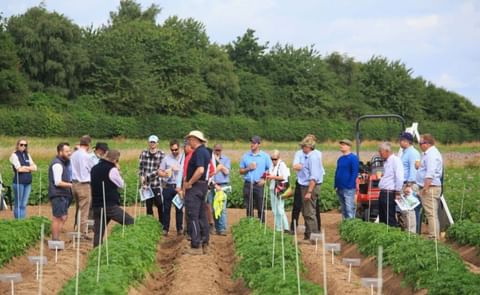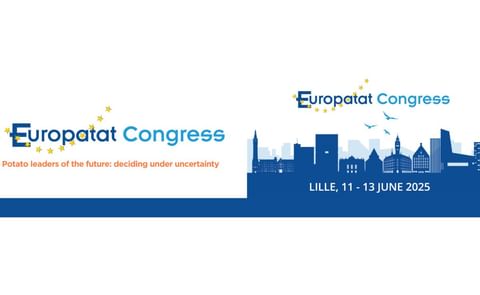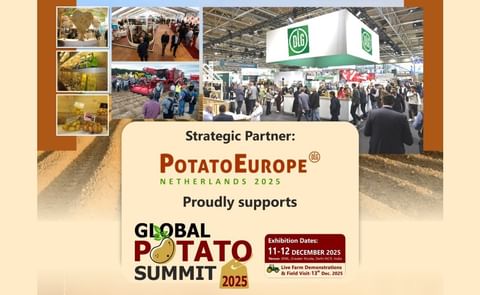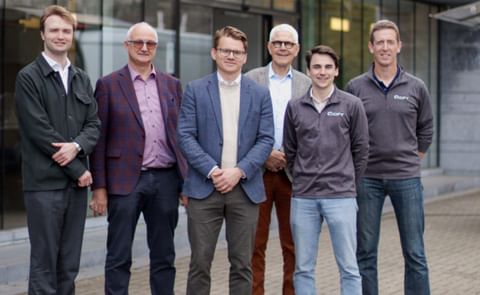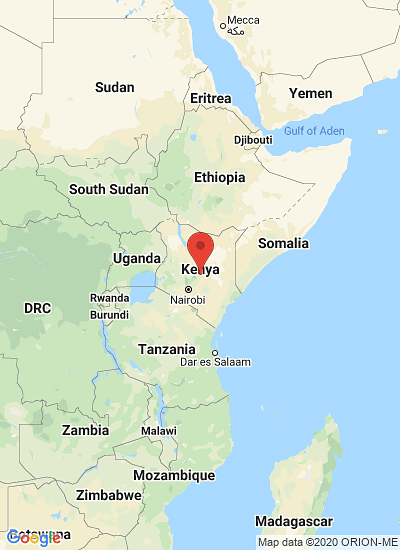A proud farmer with harvested potato.
Working together on sustainable potato production in Kenya
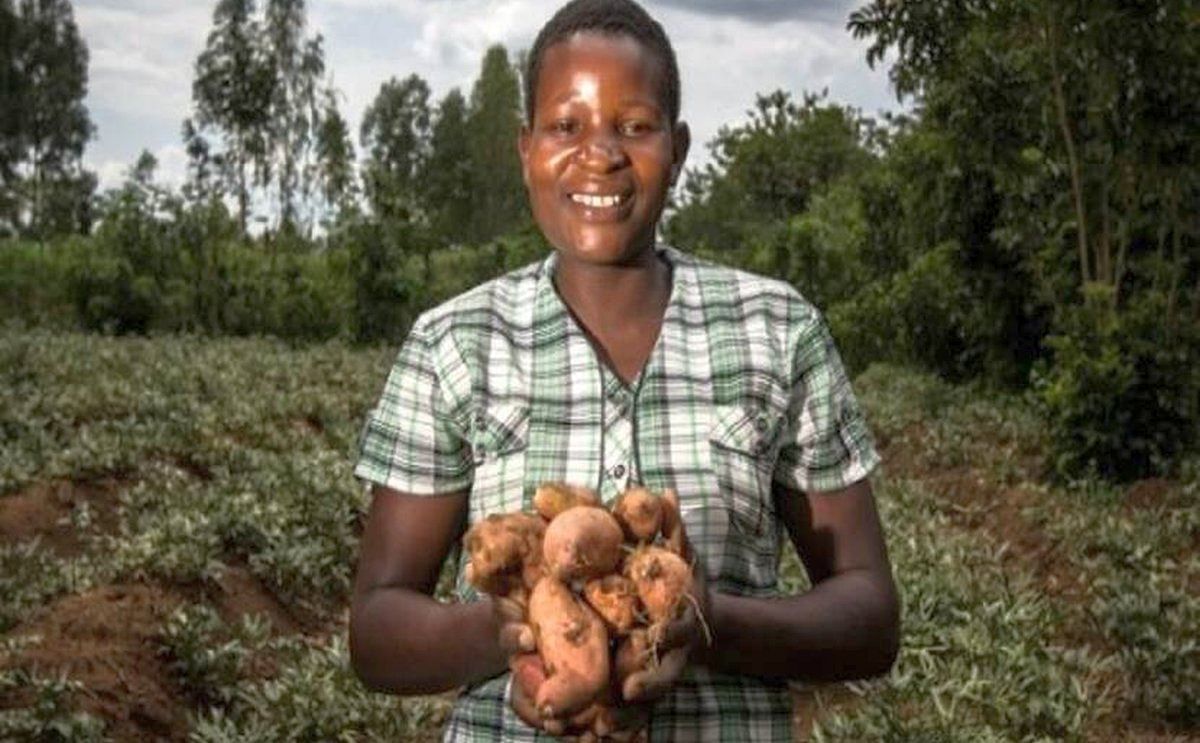
Viazi (potatoes in Kiswahili) are grown in Kenya since the 19th century. The production and consumption of the potato have grown steadily since. Currently, potato is the second most important crop after maize in Kenya. The potato produces more food on less land faster than any other major food crop.
The potato sector, therefore, offers job opportunities, strengthens trade, and contributes to food security. As the development of the sector offers opportunities for both Kenya and the Netherlands, we have invested in the past years in strengthening the potato value chain.
One hectare of potatoes can yield a crop with a food value of more than four hectares of grain. Potatoes also yield twice the protein per hectare of wheat. Potatoes are rich in protein, calcium, and vitamin C and have an especially good amino acid balance. A single medium-sized potato contains about half the daily adult requirement of vitamin C; other staples such as rice and wheat have none.
The Kenyan highlands have the potential to grow an excellent potato crop. However, the yields (7 - 10 T/ha) have not yet reached their potential. To assist the sector to optimize its production the Kenya Netherlands Seed Potato Program, financed by the Government of the Netherlands, was started.
The program has already led to several developments since its start. For example, 34 Dutch varieties are registered in Kenya (see Kenya Potato Variety Catalogue from NPCK) production and multiplication of potatoes have increased and several sustainable solutions, such as storage, have been introduced.
This all would not have been possible without the close cooperation between the governments and the private sector.
Cooperation in the availability of certified seed
The program quickly identified the supply of quality (certified) seeds of preferred varieties important for strengthening in Kenya. Production of seed, which is the driver of development in the sector currently, stands at 5% of the estimated demand of 100,000 tonnes.
Tissue culture is the main propagation method used for the production of mini tubers. This system on its own has not been sufficient in supplying the required tonnage of certified seed potato. It produces only 2% of certified seed with the rest coming from informal seed systems.
The seed that farm-saved leads to ever-decreasing yields and increased disease pressure. Since 2012 the governments of Kenya and the Netherlands have therefore partnered to facilitate the import of basic seed. This approach boosts access to certified seed by avoiding the rigorous process of tissue culture which has been left to the companies in the mother country.
Local seed multipliers multiply the imported seed once or twice, thereby increasing available seed volumes of required varieties. The multiplied seed is then certified by KEPHIS and sold to farmers who produce both for processing and local market.
The partnership has led to the provision of certified seed to the market, which in turn has enabled massive investments in the seed growing sector (e.g. in mechanization, storage, and crop management including disease control). Appropriate varieties are now available for table consumption as well as for chipping and crisping allowing the potato processing industry to grow. Despite efforts to supply the market with certified seed there still remains a gap.

Seed potato production in Central Kenya
Some (estimated) figures
- The Kenya Big 4 agenda targets a potato production of 2.5 million tons per annum;
- This would require 500,000 tons of (certified) seed assuming that the majority of the producers are small-scale producing with an average yield of 12.5 tons/ha;
- The current estimate of certified seed that is marketed is 5000 tons (mainly produced by three large-scale seed growers). A Technoserve survey of 2018 estimated the seed gap at 23,000 tons/annum link.
- Kenya urgently needs another 800 hectares of seed production per annum to achieve the targets under the Big 4.
- At its highest imported seed will not produce more than an estimated 10% of the total seed requirement. This leaves room for other propagation methods to fulfill the gap in seed requirement
One goal, different approaches to seed production
All stakeholders in the seed potato sector are working hard to close the seed gap and make certified seed available in line with the market demands. They follow different but complementary approaches in seed propagation:
- Public institutions such as Kenya Agricultural and Livestock Research Organization KALRO, International Potato Center (CIP), and ADC produce seed starting with tissue culture. In addition, commercial seed growers such as Kisima, Suera, and IPM Potato Group (Partners with Kirinyaga Seeds) apply that technology and produce varieties for the Kenyan market.
- There are private seed growers who import basic seeds and multiply the seed once or twice before marketing. In 2020, 250 tons were imported, which in turn provided the basic seed for large-scale seed potato farms. The certified seed that was produced was made available to small-scale farmers who were also provided with training on good agronomic practices in potato production.
- Use of apical cuttings for use by small-scale farmers to produce their own seeds. This technology is still under scrutiny when it comes to its potential for commercial certified seed production.
All of these three technologies have their economic, agronomic, and technological pros and cons and are considered not competitive, as the market for quality seed is still insatiable. Increasing high-quality seed availability is not sufficient in itself for increased productivity. Good crop management practices and investment in mechanization where applicable are equally important.
By having both in place, production can quadruple from 2-3 million to 8-10 million metric tonnes. This will surpass the national goal of 2.5 million metric tonnes. Kenya could shift from over-reliance on maize, meet its food needs, and become an exporter of potatoes in the region.
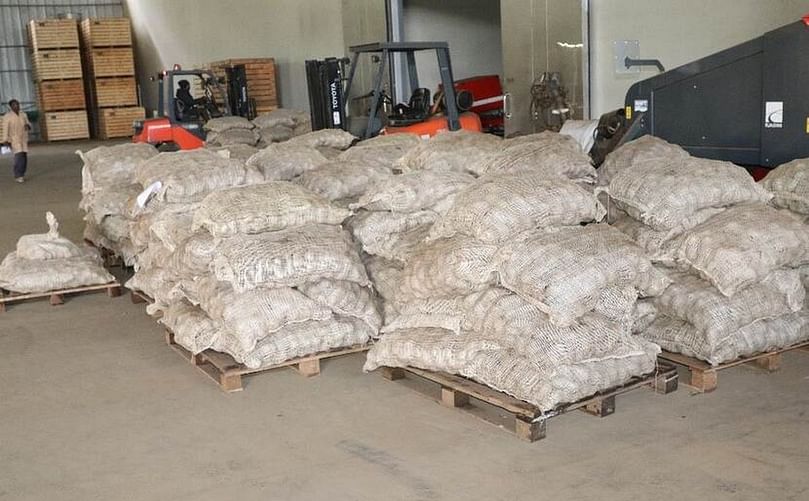
Seed potatoes waiting for transport to farmers
Growth potential and investment opportunities
The seed potato sector is experiencing slow but gradual growth with ample investment opportunities for the decade to come. Three low-hanging fruits:
- Commercial farms: There is a ready market for certified seed, with a volume equivalent to production on 800 hectares. This demand could be met by 2 to 3 large-scale commercial agricultural enterprises with the capacity to invest in land, machinery, storage, adequate crop management, and a seed distribution network. With the current large-scale seed growers located in the center of Kenya, it makes sense to situate at least one large seed farm in the high altitude areas around Eldoret/Kitale;
- Storage: Storing (seed) potatoes is a profession in itself and fundamental for potato production, distribution, and marketing. Considerable post-harvest losses and huge price fluctuation scream for investments in the appropriate storage solutions as well as storage management capacity.
- New varieties: Despite the 56 seed potato varieties registered in Kenya, farmers generally complain that varieties they want are not on the market. This is partly a marketing and distribution problem, but also due to the choices made by and the limited capacity of seed growers.
The latter produce largely processing potatoes for which there is a ready market. COVID-19 made clear however that this is also a sensitive market. As life came to a standstill, processing plants minimized production, and the market for processing varieties dropped.
The market for table potatoes grew, and the demand for table varieties is growing with the seed in short supply. There is a big demand for greater diversification of varieties to complement Shangi, and varieties resistant to Late Blight to make the seed interesting for small-scale farmers.
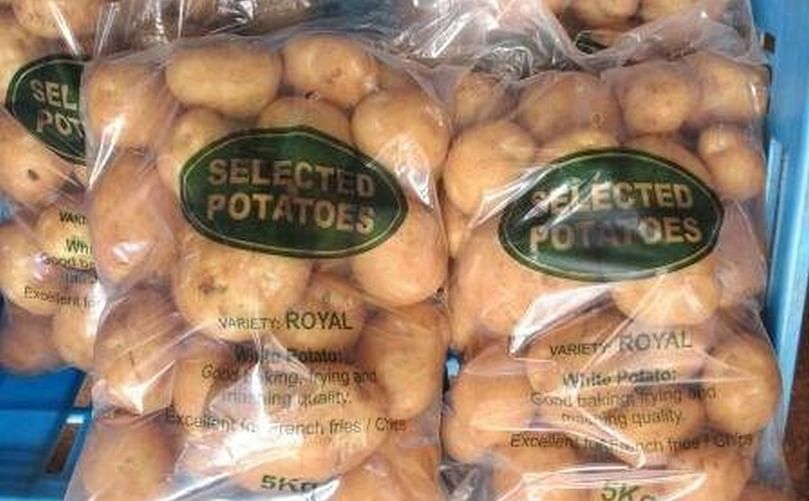
Table potatoes in the supermarket
Jointly growing potatoes in fertile grounds in Kenya
The collaboration between Kenya and the Netherlands on potatoes is longstanding. Below are some ongoing initiatives:
- Knowledge and expertise exchange. The Netherlands General Inspection Service for Agricultural Seeds and Seed Potatoes (NAK) and Netherlands Food and Consumer Product Safety Authority (NVWA) have been involved in capacity building and training inspectors with Kenyan Plant Health Inspectorate Services (KEPHIS).
- The pilot for disease surveillance in the potato growing regions. A collaboration with stakeholders such as CABI, Technoserve, KEPHIS, and KALRO amongst others.
- The publication of the potato signals books African Edition serving as a practical guide for potato production.
- A study on the opportunities on the valorization of potato waste obtained in either production or processing. The study will also look into the potential of value addition along the entire value chain.
The next decade will see this partnership matured together with growing business development for a healthy potato sector in Kenya. For specific questions on the Seed Potato Program, you can contact the program coordinator Emily Osena through email at osenaemily@gmail.com.

